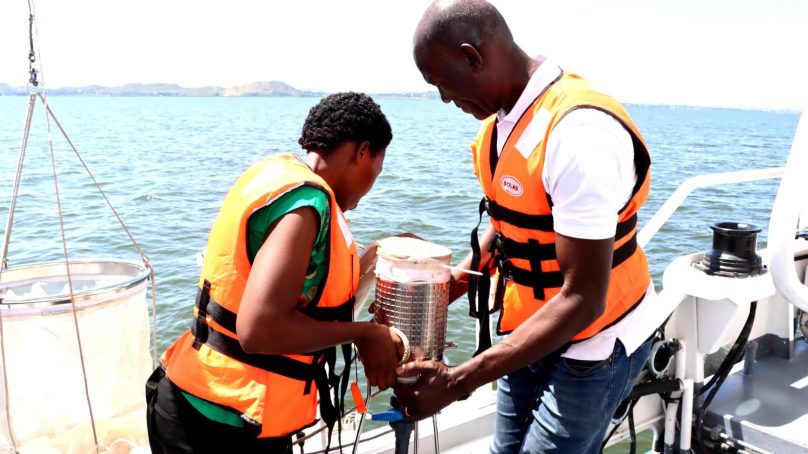
Over 40 million people who depend on Lake Victoria for food, water and livelihoods across East Africa, face a deepening crisis as a new regional study reveals rising pollution levels in major urban centres around the lake.
Findings from a scientific monitoring programme commissioned by the Lake Victoria Basin Commission (LVBC) reveal growing contamination in nearshore waters, driven by untreated wastewater, agricultural runoff and solid waste disposal.
The month-long study, conducted in collaboration with Kenya, Uganda and Tanzania governments, covered over 44 sites around the lake, including heavily impacted urban areas such as Kisumu, Kampala, Entebbe and Mwanza.
Water samples were collected from both surface and bottom layers and analysed both on-site and in specialised laboratories.
LVBC Water Resources Management Officer Simon Otoung said the assessment examined a wide range of parameters, including pH, temperature, turbidity, dissolved oxygen and photosynthetically active radiation (PAR).
Nutrient analysis, he said, revealed elevated levels of nitrogen and phosphorus – key contributors to algal blooms, silica, alkalinity and total suspended solids.
He added that scientists also measured Chemical Oxygen Demand (COD), an indicator of organic pollution, and analysed major ions such as calcium, magnesium, and chloride.
Selected hotspots were also tested for hazardous heavy metals, including mercury, arsenic, and lead.
To assess biological health, phytoplankton monitoring, he said, was carried out to determine algal composition and abundance.
Speaking during the release of the findings in Mwanza Tanzania, Eng Otoung, said the study provides a layered snapshot of the lake’s physical, chemical and biological condition.
“The goal is to move beyond speculation and use real data to inform policy and urgent action,” he said.
In Kisumu, the findings echo the concerns of fishing communities, where catches have declined as fish migrate away from oxygen-depleted nearshore waters.
“Pollution has significantly intensified in areas around major towns. Fish are moving away from the oxygen-depleted coastal zones, posing a growing challenge to local livelihoods,” said Dr Benjamin Kyalo, Kenya’s Deputy Director of Water Resources at the Ministry of Water, Sanitation, and Irrigation.
Dr Obubu Peter, Uganda’s Assistant Commissioner for Water Quality, noted that it has been more than two decades since such a detailed transboundary assessment was undertaken.
“Many of our water treatment systems were never designed to filter out the level of chemical pollutants we’re seeing today. We are reaching a tipping point,” he said.
Tanzania’s Assistant Director at the Ministry of Water Monica Mushi called for collective action in conserving the lake.
“What happens in one country affects all of us. This is a shared resource, and we must safeguard it together for the generations to come,” she said.
Cosmus Muli, a technical advisor with the German Development Agency (GIZ), which supported the study, emphasised the importance of evidence-based environmental governance.
“Science must now inform the next phase of environmental governance to safeguard the lake,” he said.
LVBC Executive Secretary Dr Masinde Bwire described the findings as a wake-up call for East African states.
“We cannot manage what we cannot measure. This study arms us with facts. Now we must summon the political will and regional solidarity to act,” he said.
He added that the data will inform the 2025 State of the Lake Victoria Basin Report, a vital tool for environmental planning, policy development, and infrastructure investment across the region.
- A Tell Media / KNA report / By Chris Mahandara







